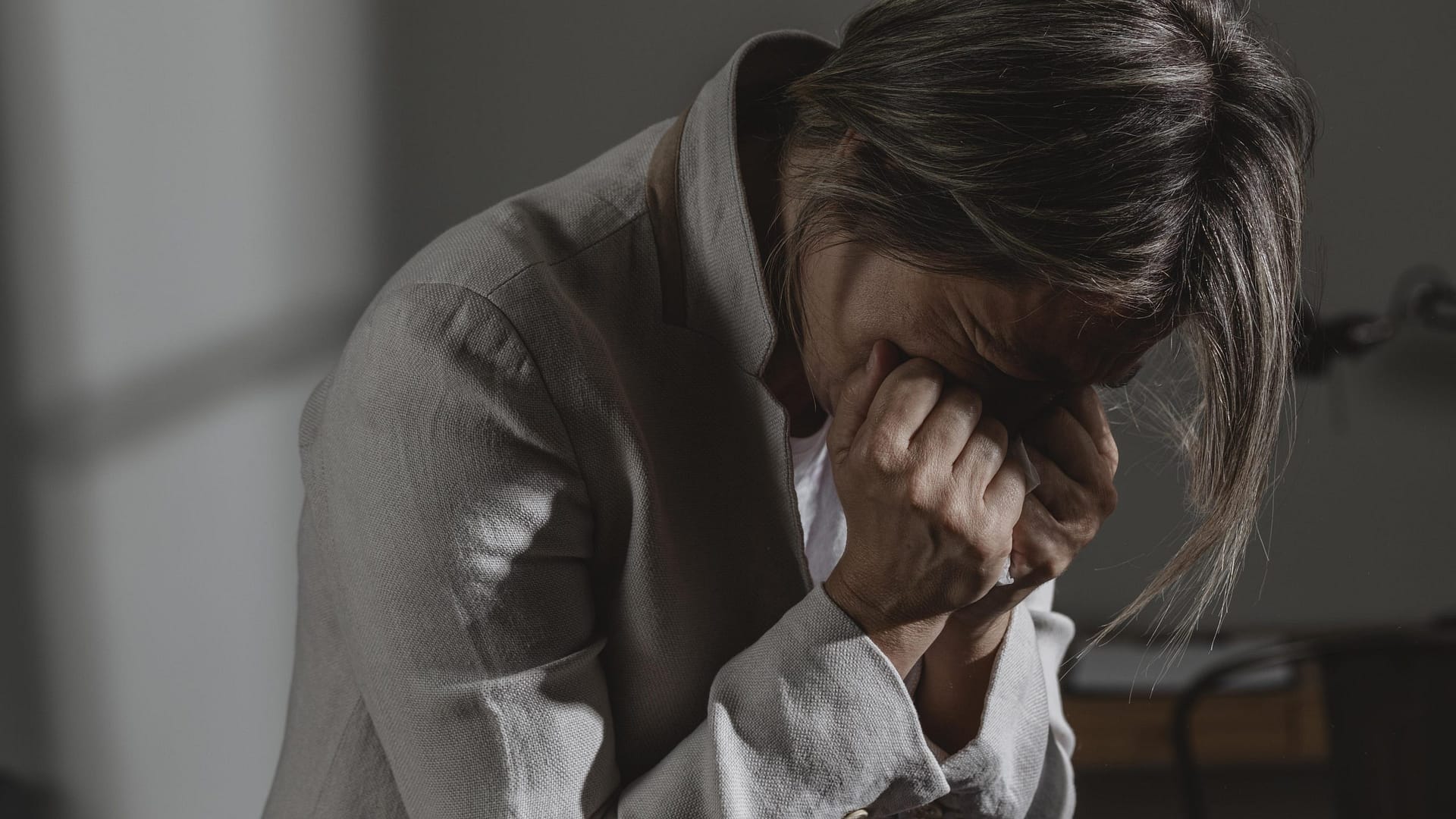Obsessive-compulsive disorder (OCD) is a psychiatric disorder characterized by obsessions and compulsions. OCD is a familiar term to most people, but there’s also a less-known form called Self-Injury OCD. It refers to those intrusive thoughts and feelings that are about self-imposed injuries or inflicting harm on oneself.
On the contrary, suicidal ideation may be driven by a desire to flee from pain, whereas Self-Harm OCD is anxiety–based and arises out of fear to act on these intrusive thoughts. People with this condition are usually distressed at such thoughts and thus get involved in compulsions to lessen their anxiety levels.
So, understanding the symptoms of Self-Harm OCD is essential as it can significantly impact daily life functioning as well as well-being.
Symptoms of Self-Harm OCD
Intrusive Thoughts
People who have this type of obsession experience unwelcome and distressing thoughts involving hurting themselves or others. The images of self-inflicted injury are vividly depicted in one’s drawing blood from cuts or burns done by sharp objects, among other things.
- Bodily Harm: This includes graphic mental pictures of cutting oneself through slits or burns.
- Damage others: These involve disturbing thoughts about injuring loved ones or strangers.
Compulsions and Rituals
The objective behind compulsions is repetitive behaviors, which assist in reducing the anxiety related to being bothered by obsessive ideas. In Self-Harm OCD, these rituals aim at making one feel better about the situation. They include:
- Avoidance Conducts: Actions avoiding connections with harmful substances like blades among other objects which are associated with harm. For instance, excluding oneself from certain places or not going near sharp objects.
- Mental Reassurances: Constantly request guarantees from oneself and/or other people that they will not act upon damaging ideas.
- Counting or Checking: Rigid counting and checking rituals are used to avoid harm.
Emotional and Functional Impact
The emotional consequences of Self-Harm OCD are substantial such as:
- Fear: This is coupled with intense anxiety about the intrusive thoughts, leading to a state of perpetual distress.
- Panic Attacks: Inexplicable panic as a result of these intrusive thoughts
- Guilt: Extreme guilt is felt by people due to the way they think about themselves despite knowing deep inside that such thinking occurs on its own.
- Negative Self-Perception, self-criticism, feelings of worthlessness
- Requirement for Reassurance: Such persons find it difficult to stop bothering others or performing mental rituals all the time.
Self-harm OCD can limit daily activities:
- Isolation From Society: To prevent these thoughts from occurring in real life, one may opt not to participate in social activities at all.
- Discomfort in Specific Environments: Individuals suffering from obsessive-compulsive disorder feel unsafe whenever they encounter certain settings due to their propensity for evoking unwanted thoughts.
- Daily Life Interference: The compulsions can take hours and are mentally exhausting, which impacts work, relationships, and hobbies.
Avoiding the Trap: Self-Help Strategies
Importance of Professional Help
It is important to seek professional assistance and get OCD therapy in NYC to deal with Self-Harm OCD, although self-help strategies have a role to play as they provide evidence-based approaches and individualized care plans. Here are some key points:
Therapy Options: Cognitive-behavioral therapy (CBT) and Acceptance Commitment Therapy (ACT) is considered the most useful treatment for OCD. In particular, Exposure and Response Prevention (ERP) is highly efficacious. ERP involves gradually exposing yourself to situations related to your obsessions and resisting the associated compulsions. A trained therapist can guide you through ERP.
Recognizing Triggers
The recognition of triggers is a fundamental part of managing Self-Harm OCD because they are things that trigger distressing obsessive thoughts or feelings about hurting oneself or others. They enable coping mechanisms when identified as well; examples include:
- Objects: Sharp tools, knives, or other items associated with self-harm.
- Situations: Being alone, feeling overwhelmed, or experiencing intense emotions.
- Thoughts: Intrusive thoughts about self-harm or harming others.
Challenging Intrusive Thoughts
To break free from the cycle of obsessions and compulsions, consider these techniques:
- Cognitive Reframing: Question the credibility of intrusive thoughts — tell yourself that ideas just pop up in your head, not that they shape future outcomes. You must follow through with “I must act on this thought,” will change into “This is an irrational obsession.”
- Switch from “I’m a danger to myself” to “These thoughts don’t define me.”
- Mindfulness: Keep present by observing your mind without any judgment, which reduces anxiety and prevents impulsive reactions.
- Delay Rituals: When an intrusive thought arises, delay any compulsive response. Gradually increase the delay time. This weakens the link between idea and compulsion.
Professional Strategies for Mental Health
There are several reputed psychotherapists in New York City who offer assistance and use the below treatments for managing mental health issues:
Cognitive Behavioral Therapy (CBT)
- It helps people recognize distorted thinking.
- Cognitive Behavioral Therapy is useful for many types of mental health problems, such as anxiety, depression, and obsessive-compulsive disorder (OCD).
- One specific form of Cognitive Behavioral Therapy is Exposure and Response Prevention (ERP).
Exposure and Response Prevention (ERP)
- It is one of the most successful methods of treating OCD.
- Exposure and Response Prevention belongs to the Cognitive Behavioral Therapy family, which aims at reducing anxiety caused by obsessions as well as compulsions.
How it works:
- Exposure aspect: Individuals are deliberately exposed to stimuli that trigger fear or distress or lead to obsessive thoughts.
- Response-prevention aspect: They learn techniques to prevent their usual maladaptive response (compulsion).
- Gradual exposure to triggers helps patients tolerate distress without resorting to rituals.
Example: A person with OCD might touch a public doorknob (trigger) and worry about germs. ERP would involve holding the doorknob without immediately washing hands.
ACT or Acceptance and Commitment Therapy
- ACT is a form of psychotherapy that seeks to increase psychological flexibility, meaning staying present and engaged in activities that are consistent with personal values even when having difficult thoughts or feelings.
- ACT suggests life-engagement rather than repeated exposure for people with obsessions.
- It complements CBT and has been found useful in different mental disorders.
- These different types of therapy have good techniques to manage mental health issues. Distorted thinking (CBT), facing fears (ERP), and acceptance (ACT) may all be incorporated into the process of becoming healthier.
- Remembering that it is important to get professional assistance and finding mental health therapists who use these research-supported techniques can be crucial if you or someone you know is struggling with such issues.
FAQs: Self-Harm OCD
Q: How can I differentiate Self-Harm OCD from suicidal thoughts?
A: Suicidal ideation typically manifests as wanting to escape pain or put an end to suffering. The intrusive thoughts in Self-Harm OCD, however, are unwelcome and generate significant distress. People with Self-Harm OCD fear actually acting on these ideas but do not want to die.
Q: Does Self-Harm OCD pose any physical risks?
A: No, the self-harm OCD may not pose any risk to themselves, instead it is the fear of carrying out intrusive thoughts, and that is causing them a lot of agony. However, this anxiety, together with compulsive behaviors, can weigh down on one’s emotional well-being.
Q: Can I stop my own Self-Harm OCD?
A: Although self-help strategies may assist during treatment, therapy remains the correct way to handle this condition. An example is a psychiatrist who will help you with ways such as Exposure Response Prevention (ERP), which will gradually reduce your anxiety level while assisting you live without compulsions.
Conclusion :
Remember that many people face this same struggle as you; hence, it is not something very uncommon. This disorder can be handled by professionals. Just reach out and ask for support. Such resources as therapy or crisis hotlines will enable you to take charge of your OCD and support you to live a more normal life again.
You can find an OCD therapist in New York, who could be a crucial part of handling your mental health issues to lead a fulfilling life. If you are looking for a therapist, then just call Gita Sawhney at her practice, GS Mental Health & Wellness, in Manhattan, New York.






